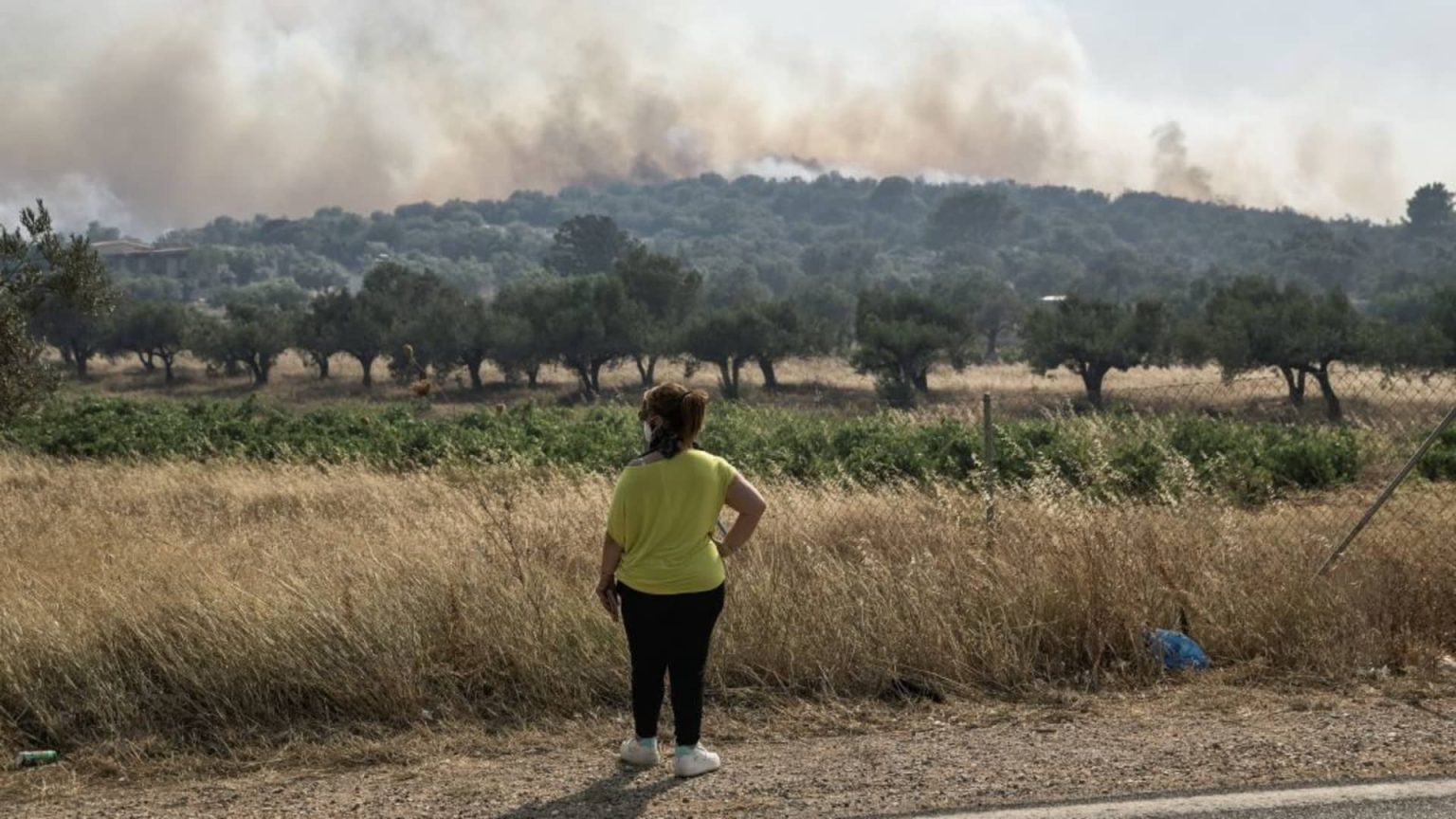An unrelenting heatwave stretching across southern Europe is expected to push temperatures close to a record on Tuesday, with emergency workers in Spain, Greece and the Swiss Alps battling to contain wildfires.
Italy, Spain and Greece are all forecast to see the mercury shoot above 40 degrees Celsius (104 Fahrenheit) as a second heatwave of the summer engulfs the region. The new heatwave is named “Charon,” a reference to the ferryman in Greek mythology who carries souls to the underworld.
Following the previous “Cerberus” heatwave, Italy remains in the grip of scorching heat. Sardinia and Sicily could see temperatures peak at around 46 degrees Celsius on Tuesday, according to Italian weather news service Meteo.it.
Europe’s hottest-ever recorded temperature is believed to be 48.8 degrees Celsius, logged near the ancient city of Syracuse on the coast of Sicily in August 2021.
The World Meteorological Organization believes this record could be broken in the coming days as the heatwave is expected to intensify.
It comes shortly after the planet registered its hottest day since records began for the third time in just four days earlier this month, while both the U.S. and China saw temperatures climb above 50 degrees Celsius in recent days.
Climate scientists say the recent spate of global heat records underlines the increasing urgency to slash greenhouse gas emissions as quickly and as deeply as possible.
Researchers say the climate emergency is strongly increasing the odds of heatwaves such as the one currently being experienced across Europe.
“The bubble of hot air that has inflated over southern Europe has turned Italy and surrounding countries into a giant pizza oven,” said Hannah Cloke, a professor at the University of Reading, U.K, who researches natural hazards.
“The hot air which pushed in from Africa is now staying put, with settled high pressure conditions meaning that heat in warm sea, land and air continues to build,” she added.
“Sea level rise, melting ice, extreme heatwaves, intense rainfall, wildfires, drought and floods are cropping up in many parts of the world at the same time,” Cloke said. “In previous heatwaves, such as Britain’s hot summer of 1976, other parts of the globe had a relatively cool year. Today’s extremes of weather are increasingly throwing everything everywhere all at once.”
Wildfires
Italian policymakers on Tuesday issued hot weather red alerts for 20 cities nationwide. The red alerts mean that even healthy people could be at risk from the extreme weather conditions.
In Spain, the state weather agency warned of extreme danger, with temperatures expected to reach 44 degrees Celsius in areas such as Mallorca, Aragon and Catalonia.
It comes as wildfires continue to burn out of control on the Canary Island of La Palma, where more than 4,000 people were evacuated over the weekend.
Two wildfires on Monday raged through coastal towns near the Greek capital of Athens. The flames, fanned by strong winds, broke out in the village of Kouvaras and forced residents to flee their homes.
In Switzerland, meanwhile, police ordered the evacuation of several mountain villages as a forest fire spread. Around 150 firefighters were working to extinguish the fire, while an investigation was underway to determine its cause.
“This is just the beginning. This is what the climate system can do at just 1.2 degrees [Celsius] warming,” said Simon Lewis, professor of Global Change Science at the University College London.
“Current policies globally have us hitting 2.7 degrees [Celsius] warming by 2100. That’s truly terrifying,” he added.
Lewis cited a major U.N. report from the world’s leading climate scientists last year which warned a delay in concerted global action “will miss a brief and rapidly closing window to secure a liveable future.”
The report, which examined the impact of the climate emergency on nature and people around the world, called for deep, rapid and sustained cuts in greenhouse gas emissions to halt global heating.
Read the full article here











